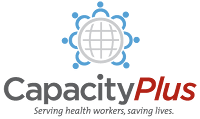Workforce Assessment
Training and Deploying Human Resources for Health for Maternal, Newborn, and Child Health in Rural Africa: An In-Depth Policy Analysis
The majority of African countries lack sufficient human resources for health (HRH) to deliver basic maternal, newborn, child health (MNCH) care, particularly in rural areas. To inform planning for the scarce HRH available, specifically as it pertains to the Millennium Development Goals and the post-2015 agenda, a rapid systematic review of evidence on training and deployment policies for doctors, nurses and midwives for MNCH in rural Africa was undertaken. [from abstract]
- 1002 reads
The Health Workforce in Latin America and the Caribbean An Analysis of Colombia, Costa Rica, Jamaica, Panama, Peru, and Uruguay
This study intends to provide an update of the status of the human resources for health (HRH) subsystem in six countries of Latin America and the Caribbean (LAC)—Colombia, Costa Rica, Jamaica, Panama, Peru, and Uruguay. The study’s discussion centers around five questions: how the health workforce is financed, how it is organized, how it is managed, how it is regulated, and how it performs. Further, the study strives to understand what role, if any, performance management policies and incentives play in these countries’ HRH subsystems.
- 961 reads
What Do District Health Managers in Ghana Use Their Working Time for? A Case Study of Three Districts
Ineffective district health management potentially impacts on health system performance and service delivery. However, little is known about district health managing practices and time allocation in resource-constrained health systems. Therefore, a time use study was conducted in order to understand current time use practices of district health managers in Ghana. [from abstract]
- 834 reads
Baseline and Work Load Indicator Assessment for Community Health Workforce: A Case of Selected Community Units in Nyanza and Coast Regions
This study sought to assess the staff requirements, work load and performance with respect to the CH work force
using workload indicator of staffing need (WISN) tool. The ultimate objective was to provide information to guide the organization, management and development of the work force. [from abstract]
- 817 reads
Assessment of Human Resources for Health Programme Implementation in 15 Latin American and Caribbean Countries
The health systems in the Americas region are characterized by fragmentation and segmentation, which constitute an important barrier to expanding coverage, achieving integrated primary health care, and reducing inefficiency and discontinuity of care. [from abstract]
- 624 reads
Women Doctors and their Careers in a Large University Hospital in Spain at the Beginning of the 21st Century
The aim of this article was to compare the advance of women with that of men and determine the differences between hierarchical status and professional recognition achieved by women in medicine. Methods A retrospective study was carried out in the Hospital Clinic Barcelona, Spain, of the period from 1996 to 2008. [from abstract]
- 526 reads
Factors Affecting Performance of Nurses at Prince Sultan Military Medical City (PSMMC) Riyadh, Saudi Arabia
The aim of this study is to assess the factors affecting performance of nurses in Prince Sultan Military Medical City (PSMMC) Riyadh, Saudi Arabia. [from abstract]
- 1030 reads
The Right to Health, Health Systems Development and Public Health Policy Challenges in Chad
This paper uses a secondary data analysis of existing documents by the Ministry of Public Health, Institut National de la Statistique, des Etudes Economiques et Démographiques(INSEED), the Ministry of Economy and Agence Française de Cooperation to analyze critically the shape and performance of health systems in Chad based on key concepts and
components of the right to health contained in article 12 of the International Covenant on Economic, Social and Cultural Rights, and on General Comment 14. [from abstract]
- 539 reads
Health Workforce Planning: An Overview and Suggested Approach in Oman
This review analyses various approaches to health workforce planning and presents the Six-Step Methodology to Integrated Workforce Planning which highlights essential elements in workforce planning to ensure the quality of services. [from abstract]
- 923 reads
Comparative Study on Health Care System Between Myanmar and China According to World Health Organization (WHO)’s Basic Health Blocks
This paper is a comparative analysis between China’s and Myanmar’s health systems, viewed through the WHO’s six building blocs of health systems: service delivery, health workforce, health information, access to essential medicines, health financing, leadership or governance.
- 832 reads
How Do Health Extension Workers in Ethiopia Allocate Their Time?
In 2003, the Government of Ethiopia launched the Health Extension Programme and introduced a new cadre, health extension workers (HEWs), to improve access to care in rural communities. In 2013, to inform the government’s plans for HEWs to take on an enhanced role in community-based newborn care, a time and motion study was conducted to understand the range of HEW responsibilities and how they allocate their time across health and non-health activities. [from abstract]
- 607 reads
Human Resources for Health: Foundation for Universal Health Coverage and the Post-2015 Development Agenda
This report describes the proceedings and main outcomes of the Third Global Forum on Human Resources for Health in Recife, Brazil, from 10 to 13 November 2013.
- 674 reads
Improving the Process of Antenatal Care to Increase Detection of Women with High-Risk Conditions in Zonal Hospital of Mandi, Himachal Pradesh, India
Zonal Hospital, Mandi identified that they were not identifying women with high risk conditions during their antenatal care (ANC) clinic. By re-organizing the clinic, the hospital was able to increase the proportion of pregnant women identified as being at high-risk from 1.6% to 12.3% in a matter of weeks. [from abstract]
- 689 reads
Key Aspects of Health Policy Development to Improve Surgical Services in Uganda
Uganda, like other low-income sub-Saharan African countries, bears a heavy burden of surgical conditions with low surgical output in health facilities and significant unmet need for surgical care. To address this lack of adequate surgical services in Uganda, a diverse group of local stakeholders met in Kampala, Uganda, in May 2008 to develop a roadmap of key policy actions that would improve surgical services at the national level.This article is a critical discussion of these health policy priorities with references to recent literature. [adapted from abstract]
- 669 reads
Assessing Health Professional Education: Workshop Summary
While discussing larger philosophical topics on the role of assessment, participants at this two-day workshop also debated the role of assessments in so-called new disciplines and how these appraisals will lead to a ‘new professionalism’. [adapted from summary]
- 696 reads
Ethiopia: Taking Forward Action on Human Resources for Health (HRH) with DFID/OGAC and Other Partners
This report presents the results of a consultancy to facilitate agreement and document current flexibility of funding streams for HRH in Ethiopia, building on existing work and within national frameworks for priority actions on HRH to develop strategies and country level actions. [adapted from author]
- 744 reads
General Practitioner (Family Physician) Workforce in Australia: Comparing Geographic Data from Surveys, a Mailing List and Medicare
The authors aimed to assess the extent of association or agreement between different spatially explicit nationwide general practitioner (GP) workforce data sets in Australia to identify any disagreements that would imply differential relationships with primary healthcare relevant outcomes with different data sets. The study also enumerates these associations across categories of rurality or remoteness. [adapted from abstract]
- 781 reads
Forecasting the Absolute and Relative Shortage of Physicians in Japan Using a System Dynamics Model Approach
The purpose of this study was to propose a physician supply forecasting methodology by applying system dynamics modeling to estimate future absolute and relative numbers of physicians. [from abstract]
- 571 reads
Accuracy of General Practitioner Workforce Projections
This study tested a workforce projection model in the Netherlands by comparing the ex-post projected number of general practitioners with the observed number of general practitioners between 1998 and 2011. [adapted from abstract]
- 740 reads
Physician and Nurse Supply in Serbia Using Time-Series Data: A Case Study
This study identified variables that were significantly related to physician and nurse employment rates in the public healthcare sector in Serbia from 1961 to 2008 and used these to develop parameters to model physician and nurse supply in the public healthcare sector through to 2015. [from abstract]
- 626 reads
Forecasting Supply and Demand in Nursing Professions: Impacts of Occupational Flexibility and Employment Structure in Germany
To portray the different possible developments in the supply of nursing professionals, the authors projected the supply of formally trained nurses and the potential supply of persons who are able to work in a nursing professioncalculated on the basis of empirical information on occupational mobility from a national census. [adapted from abstract]
- 833 reads
Longitudinal Study of Rural Health Workforce in Five Countries in China: Research Design and Baseline Description
The authors conducted a longitudinal study to explore the current situation and track the future evolution of the rural healthcare workforce, specifically village doctors, in China. [adapted from abstract]
- 585 reads
Towards Interventions in Human Resources for Health in Ghana: Evidence for Health Workforce Planning and Results
To address the lack of information to guide the development of policies and programs on HRH, this book aims to paint a comprehensive picture on HRH, consolidating new and existing evidence. The book highlights in particular new evidence on some of the underlying determinants impacting stock, distribution and performance of health workers in Ghana, including health worker production and attrition, management and accountability structures, the capacity of health training institutions, and health worker compensation. [from author]
- 1082 reads
Assessment of Human Resources at the Pharmaceutical Sector
The main objective of this assessment was to determine human resources availability in the pharmaceutical sector in Sudan. The assessment was done in six states and included the Ministry of Health and its agencies, pharmacy education providers, public health facilities, private retail pharmacies, pharmaceutical manufacturers and local pharmaceutical companies. [adapted from author]
- 1045 reads
Analysis of Human Resources for Health in African Portuguese Speaking Countries (PALOP)
The report provides available data on the health workforce in PALOP. Its purpose is to support the responsible staff and partners to identify the needs for intervention, in order to improve the national and regional capacity for the development of human resources for health. [from summary]
- 758 reads
Projecting Thailand Physician Supplies between 2012 and 2030: Application of Cohort Approaches
This study forecasts physician supply between 2012 and 2030 using cohort analysis, based on future production capacity and losses from the profession, and assesses if, and by when, the projected numbers of physicians would meet the targets of one doctor per 1,500 population. [from abstract]
- 745 reads
Tanzania's Health System and Workforce Crisis
This introduction to Tanzania’s health system and acute workforce shortage familiarizes readers with the context in which health professions education takes place. [from abstract]
- 1108 reads
Health Manpower Development in Bayelsa State, Nigeria
This study sought to identify factors necessary for effective development of health manpower in the low-resourced Bayelsa State. [adapted from abstract]
- 1145 reads
Strengthening Human Resources for Health in Cote d'Ivoire
This short (4:38 minutes) video shares information about the Health Systems 20/20 assessment of the health system in Cote d’Ivoire. Based on the findings, the project worked with in-country partners to improve production of health workers, create incentives to motivate health workers to move to the underserved north, and build health management capacity. [from publisher]
- 854 reads
Hawai'i Physician Workforce Assessment 2010
The current article describes research to determine the physician supply and demand across the State of Hawai’i. [from abstract]
- 645 reads




